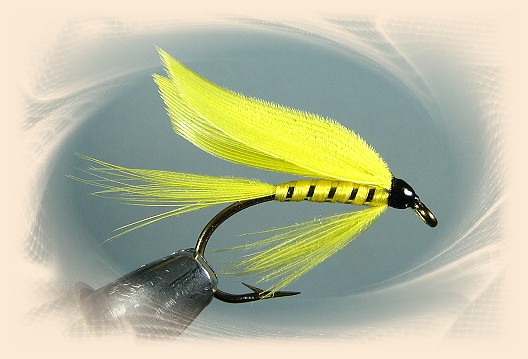
|
Yellow Sally By Larry Bordas, Pennsylvania |
|
Yellow SallyCredits: Favorite Flies and Their Histories by Mary Orvis Marbury; Flies by J. Edson Leonard; The Book of Trout Flies by Preston J. Jennings ~ LB
About Larry: My mother always said that I got my love of the outdoors from
my grandfather and it was this love of the outdoor life and to be
near the great hunting and fishing that led me to relocate to Lycoming
County of northern Pennsylvania. While I have been a fisherman
since I was six, I have only been fly fishing and tying for the past
15 years and consider myself at best only an average fly tier and
fisherman. I started teaching myself fly fishing and to tie flies by
reading books and talking to other fly fishermen and as I learned
about the nuts and bolts of fly fishing, such as casting, drag and
matching the hatch, I slowly developed an appreciation of the
history and great tradition of the sport. While learning about the
history and tying these old wet flies has given me hours of enjoyment,
my real enjoyment and memories comes from fishing with and sharing
with others information about these historic flies. ~ LB
My mother always said that I got my love of the outdoors from
my grandfather and it was this love of the outdoor life and to be
near the great hunting and fishing that led me to relocate to Lycoming
County of northern Pennsylvania. While I have been a fisherman
since I was six, I have only been fly fishing and tying for the past
15 years and consider myself at best only an average fly tier and
fisherman. I started teaching myself fly fishing and to tie flies by
reading books and talking to other fly fishermen and as I learned
about the nuts and bolts of fly fishing, such as casting, drag and
matching the hatch, I slowly developed an appreciation of the
history and great tradition of the sport. While learning about the
history and tying these old wet flies has given me hours of enjoyment,
my real enjoyment and memories comes from fishing with and sharing
with others information about these historic flies. ~ LB
|